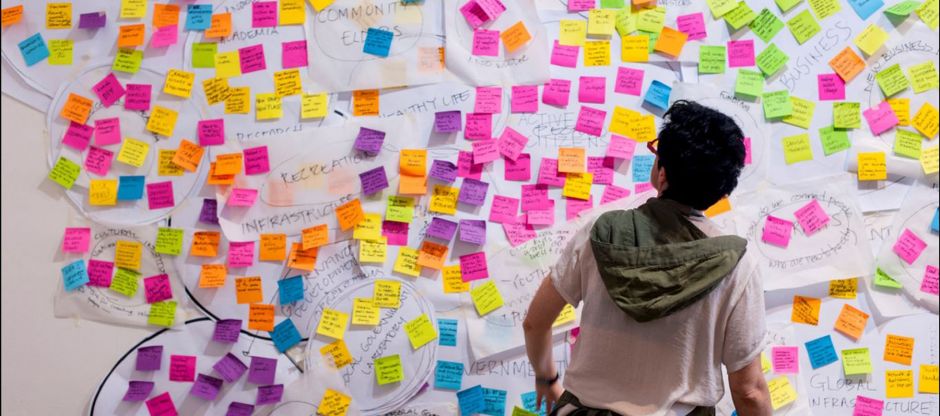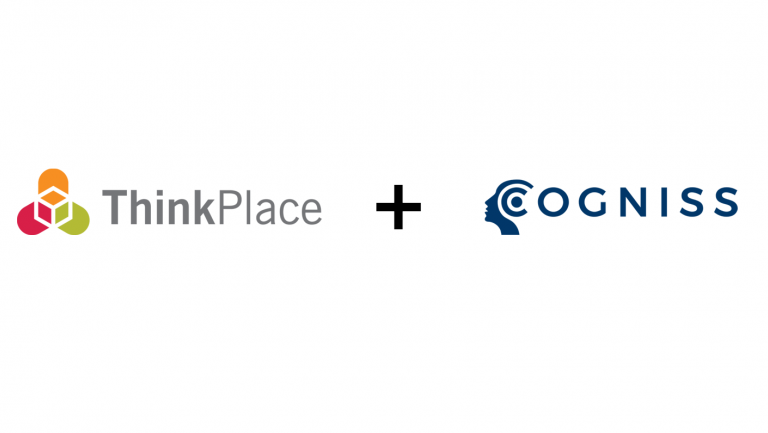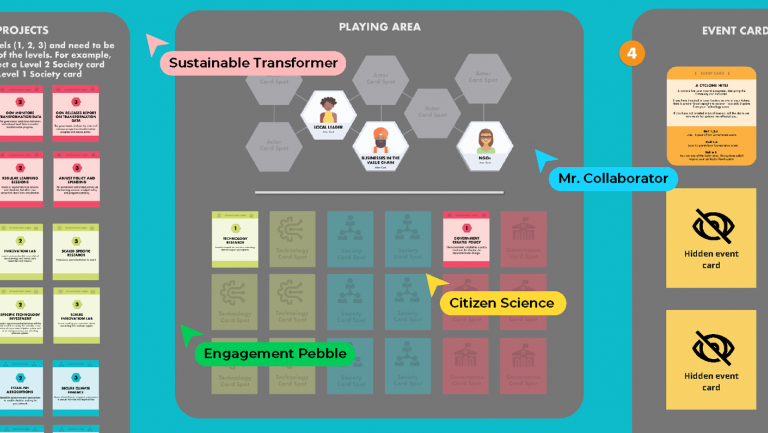Sign up for our monthly newsletter
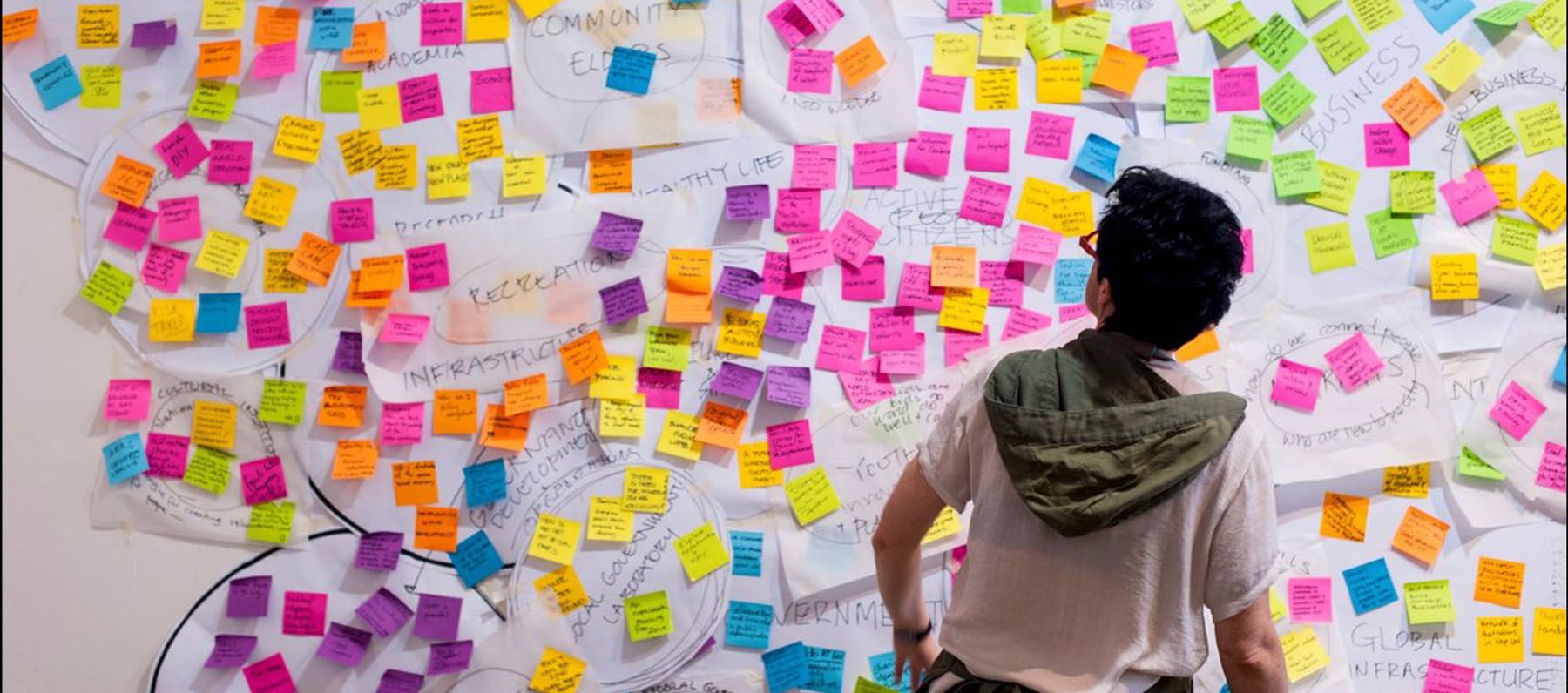
The unlimited potential of digital workshops...
Author: Michael Cohen
We’ve all been there. The connection wobbles and drops out. Somebody’s mic is off. One participant has the wrong link. Another has unreliable WIFI.
“Call them on their mobile; put them on loudspeaker…”
Welcome to videoconference hell.
Increasingly, in a globalised world, we are required to do much of our communicating in this way. There is good reason too: we know that global air travel is a significant contributor to carbon emissions. Plus, it’s… you know… expensive.
That’s why we’ve been working at finding a better way to create, facilitate and lead virtual collaborations and workshops.
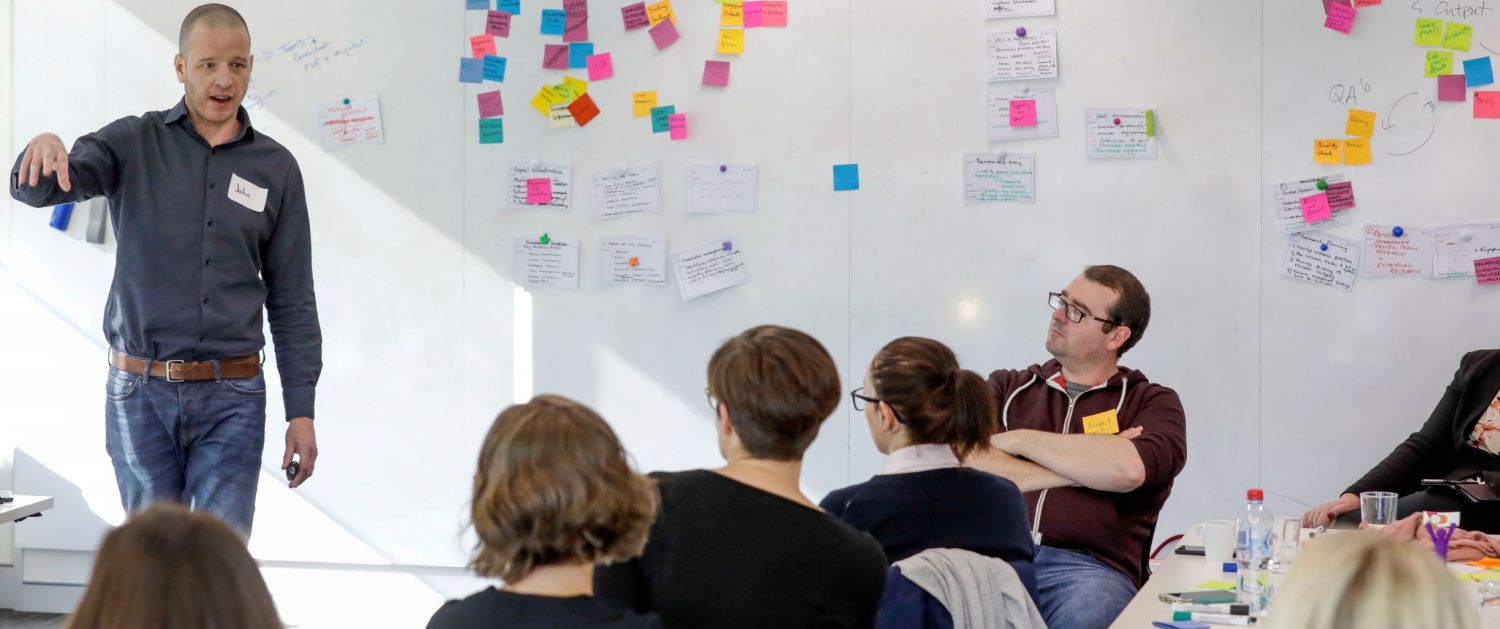
Why this matters…
When you come to a workshop in a ThinkPlace design studio it feels different.
Everything is intentional -- from the walls (which are all whiteboards) to the layout of rooms or the snack foods we offer (designed to encourage mental alertness and productivity).
How and where you sit, when you stand and when you are required to move – all are calibrated to produce effective collaboration.
Psychologists refer to “embodied cognition”—the idea that the way our bodies move through and respond to space as we encounter ideas impacts our ability to think, process and create.
In our co-design approach, we also rely on “distributed cognition”— using objects around us to hold our thoughts and employing these objects (be it LEGO, or pipe-cleaners or even origami) to share, learn and empathise with others.
And it works. Clients constantly tell us they are more creative, more strategic, more open-minded and more productive when they step into our studios.
But what if they can’t come to us?
The work we do, tackling complex challenges in complex systems, increasingly means we need to reach diverse and geographically-dispersed groups of people.
And our philosophy of co-design and human-centred design means we need not just to talk to them, but to engage them in mapping problems, generating insights, prototyping responses and testing solutions.
Video conferences suck at this. Only one person can talk at a time. One person is in charge of presenting. Conversation is dominated by the people who are physically sharing space, or the people with the strongest internet connection, to the exclusion of others.
If we ran our physical workshops that way, we’d get nowhere. We shouldn’t accept this outcome in virtual space either.
Designing in virtual spaces
In a workshop or co-design situation what we want to do is get everybody on the same page. The ‘page’ we use is the walls around us. Everyone can see them. Everyone can write on them. Everyone has the tools to be a designer.
As soon as we move into virtual space that gets harder.
So we began investigating: ‘how might we bring people together to codesign online in a way that creates embodied cognition across multiple locations?’
We began looking to replicate the power of a physical workshop in virtual space but soon discovered something surprising: What if the digital tools being examined for this purpose could generate a BETTER, more limitless workshop experience?
So what are some of those tools?
Zen synthesis
In a workshop setting we sometimes use this process to begin grouping and clustering ideas after an initial session has produced a large range of insights, priorities or ideas.
Post-its for each idea are placed on a wall and then participants silently make their way around, grouping thematically linked post-its into clusters. Any person may take any post-it and reposition it.
Over time, a crowdsourced concept map begins to emerge. In some variations members can ‘upvote’ ideas that are more important to them by placing a small sticker on them. In this way we begin to determine not just what might be done but what the priorities for action might be.
How can we achieve this kind of collective synthesis in virtual space? Our designers have been using Trello to simulate this process with startling success. Participants across multiple locations work on a shared Trello board, silently sorting cards into themed ‘lists’ as a ThinkPlace facilitator occasionally interjects to set time limits or give directions. Results have been hugely positive.
Real-time digital whiteboards
There are several apps that make this possible and software in this area is rapidly gaining better functionality.
Virtual whiteboards can be accessed by anyone who has a smartphone, tablet or laptop. Everyone can see the board and everyone can contribute to it.
As discussions and workshop exercises play out the ThinkPlace facilitator uses the digital whiteboard to share back the conversation, converting it into a visually-represented, shared mental model.
This has been part of our workshop process since ThinkPlace was in its infancy, with our Conversation Tracker working silently in the background to record and later feed back what was created in a workshop to the people who helped make it. Now, we are able to make those connections in real time, and share the product with people who aren’t in the room.
There is ample evidence that people grapple with complexity and retain detail much more effectively when they can see it visually represented in real-time.
How it’s working
We recently convened a workshop as part of a project our digital team is working on with the CSIRO – an organisation that is diverse and dispersed. Participants joined us from five different locations, including a full workshop space in Canberra.
I was co-facilitating from overseas, tracking the conversation using a digital whiteboard tool and guiding remote participants through our workshop activities, so that we could collectively create a report – while the workshop was running.
People in the Canberra workshop space could see what remote participants were creating on a large screen, and at key points the remote workshop participants were able to present back to the people in the room.
The impact could be felt: A large part of what we are doing in sessions like this is providing people with the space to be heard, to productively engage. When you are geographically remote that space can feel tiny. These new and emerging tools provide a richer experience for remote participants, which empowers them to contribute, and brings their experience closer to the people in the room.
A better way?
It can be hard to see past our real-world fixation, and it is true the meeting in person helps us to develop the strong personal and working relationships we need to collaborate successfully. But there are some distinct advantages to these new approaches, if they are done well.
ThinkPlace is committed to inclusive design methods that are accessible voices considered harder to reach. Rural voices, voices of those living with disability, voices of those who do not have the time (or money) to come into our studio and join our process.
Wherever you are and whatever the project it’s likely there are important voices who cannot come to you. Excluding them gives us a worse result.
There’s also time. Often, we see delays in large scale projects due to the sheer logistical challenge of getting everybody in the same room. That can be a barrier to the kind of rapid iteration that gives energy and purpose to many projects.
Finally, these tools allow us to apply the ThinkPlace concept of zoom in a literal sense. As designers we toggle between a systems-level view of a challenge (who are the parties involved? how do they intersect and inter-relate? What possibilities and blockers result from this web of connections?) and a human-centred view (who is affected by this change? How will they experience it?).
With digital whiteboards we can zoom literally in a way that is much harder using conventional methods. Different layers of synthesis can exist and be enlarged or shrunk down with a touchscreen flourish of thumb and forefinger. This physical manifestation of zooming provides powerful embodied cognition for a core tenet of our methodology.
The future
I’m extremely confident that these methods are going to be more and more important in the future.
They are going to allow us to tackle complex problems in parts of the world that are considered hard to get to, with people who are too often considered too hard to reach.
We can run larger group ‘engagement’ sessions where each table has an iPad loaded with the digital whiteboard. We can have facilitators for each group, making sure they understand the technology and are not alienated or excluded by it.
I am confident that iterations of these whiteboards are already under development that will incorporate machine translation at a level effective enough for real-time collaboration.
Imagine having ten people in a workshop, spanning ten different locations and ten different languages. And everybody able to have input, see convergence and enjoy a unified collaborative experience.
There is so much scope for what we can do.
Airlabs
Our Airlabs service allows us to run interactive workshops, meetings, co-design, research activities and experience testing online, with 100% remote attendance and a simple, engaging experience for participants. We are able to convert any workshop to an Airlab rapidly.
